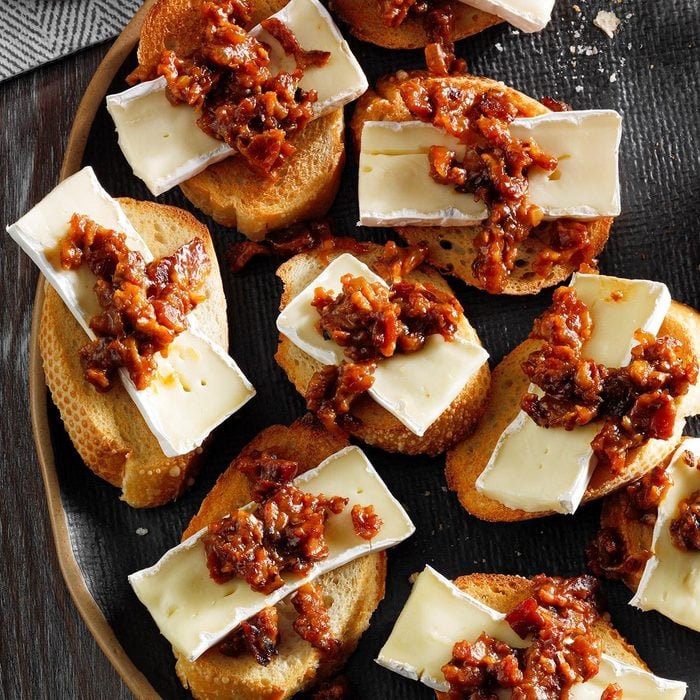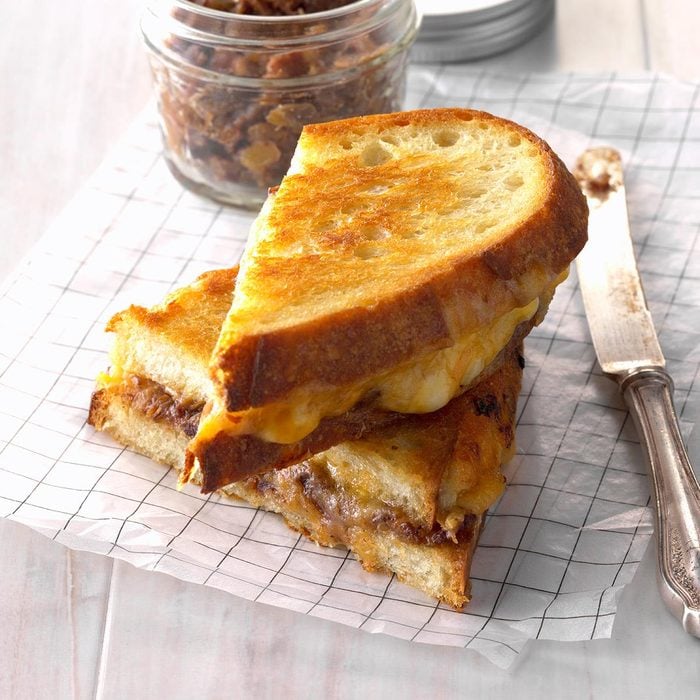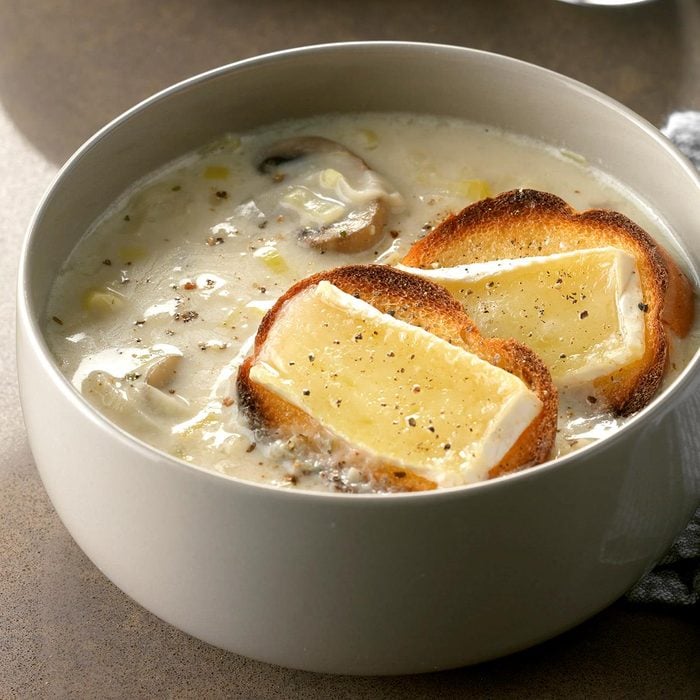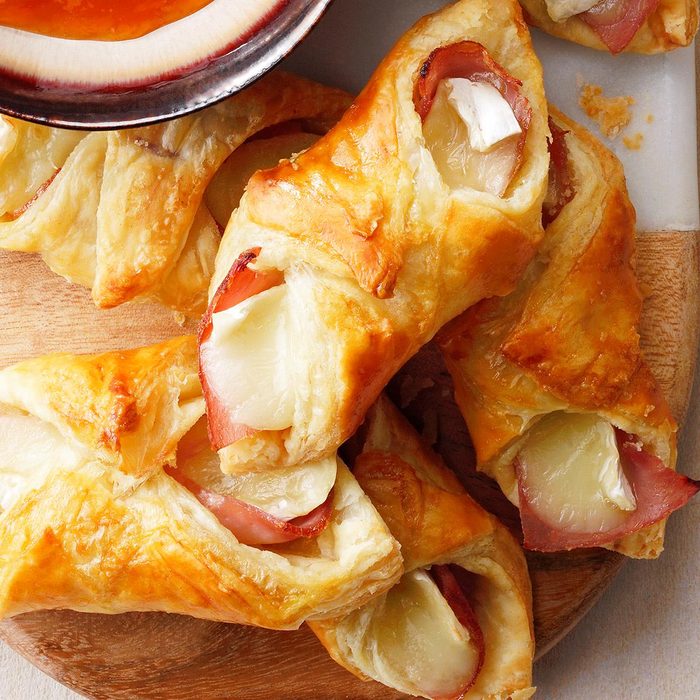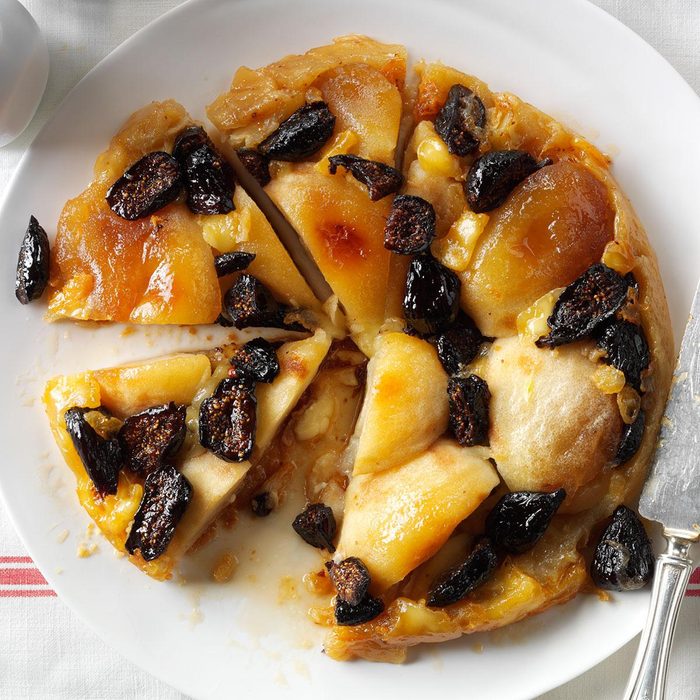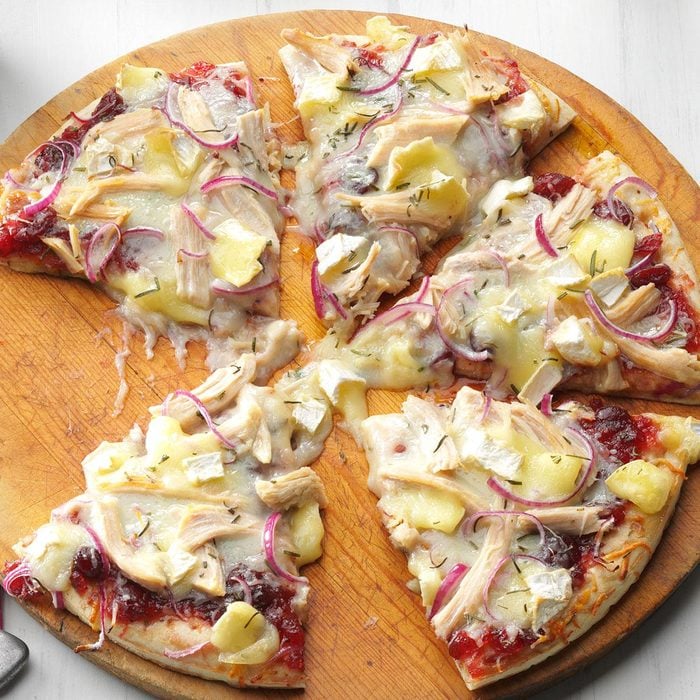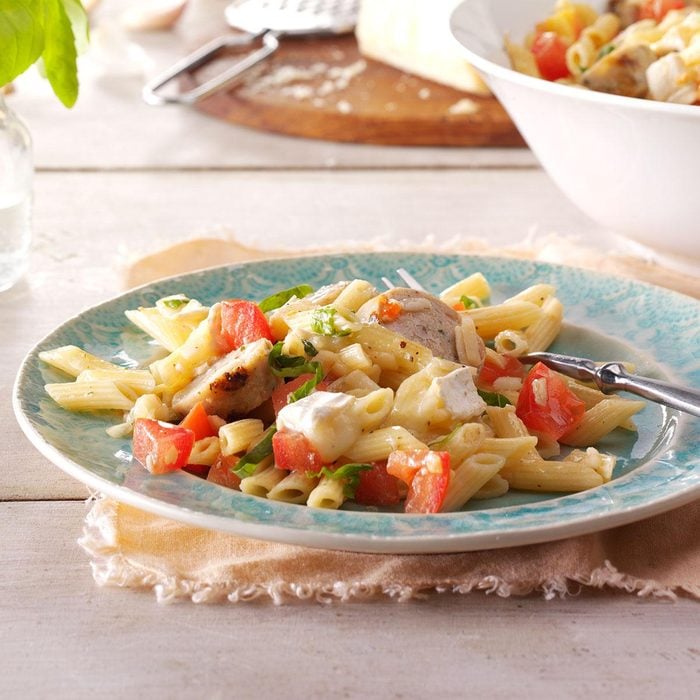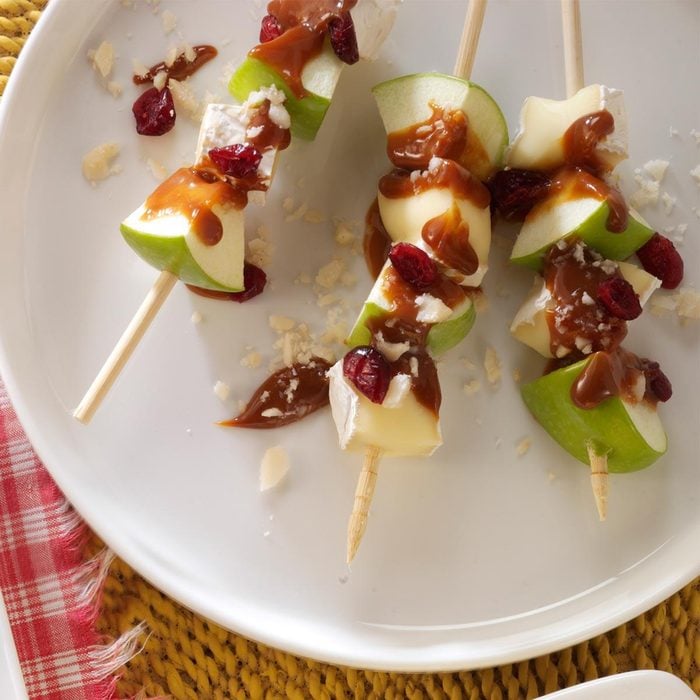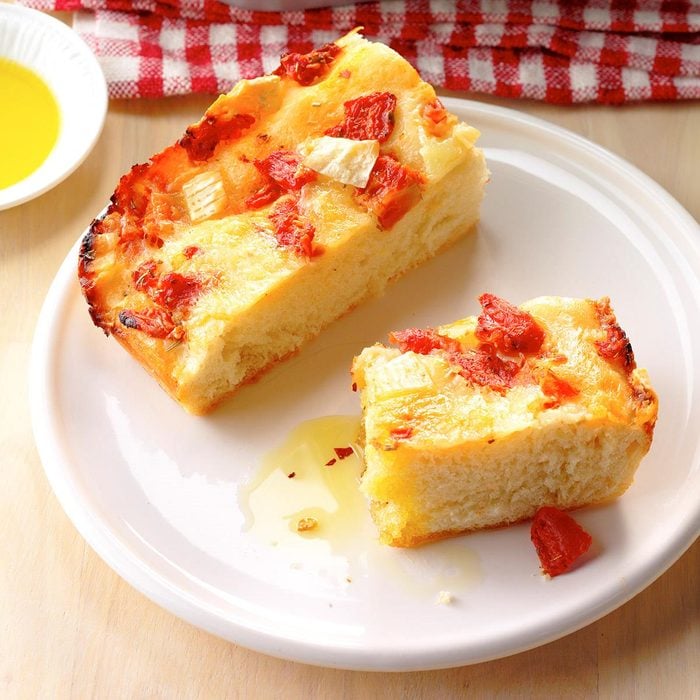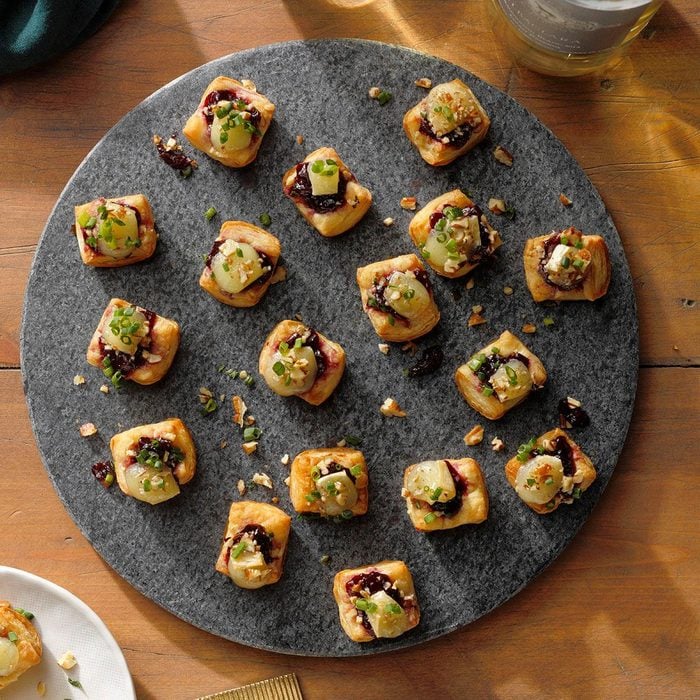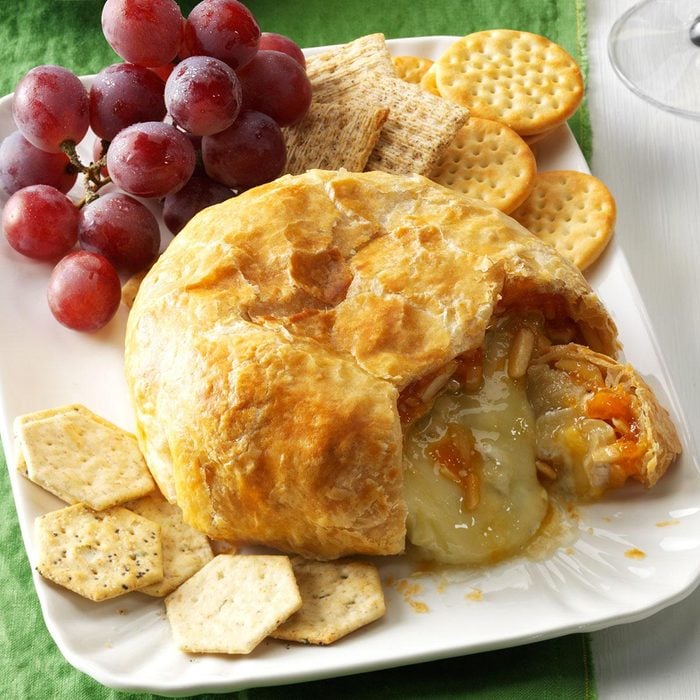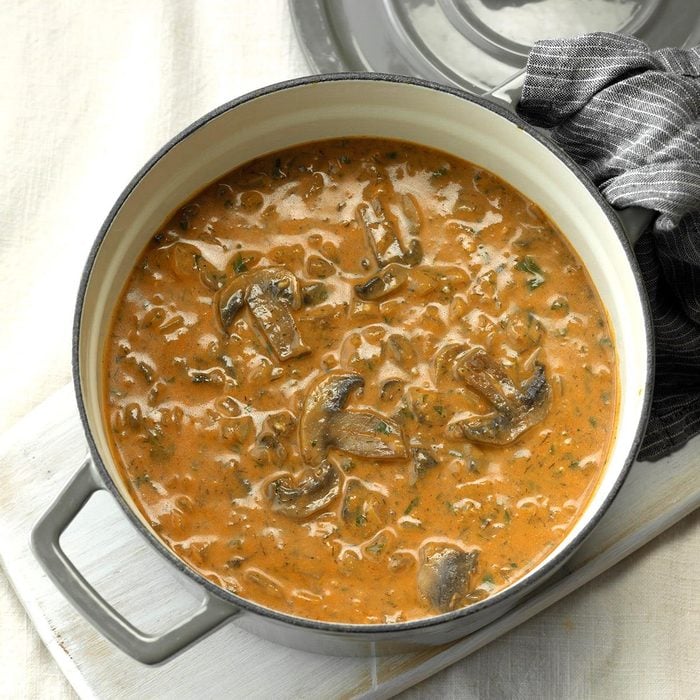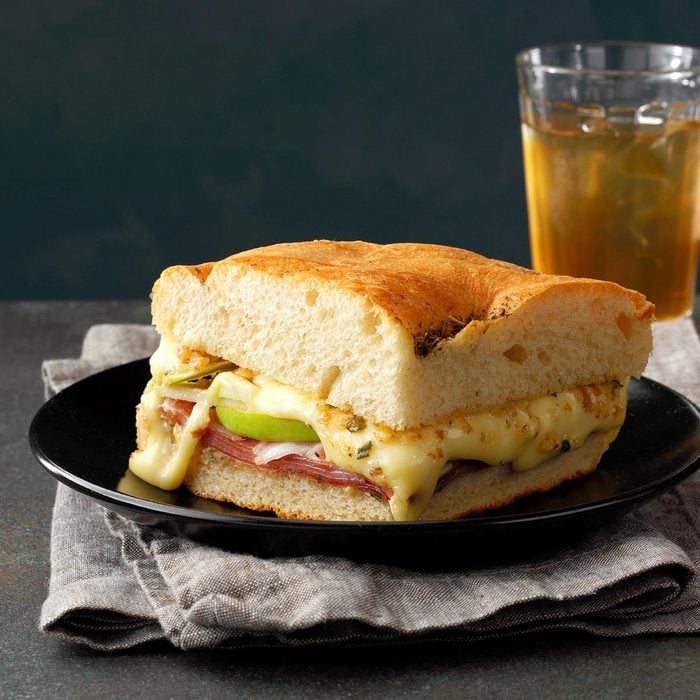There are certain foods that make any occasion feel special, and Brie is one of them. Whether it’s served with crunchy apple slices or baked into a flaky puff pastry, Brie instantly elevates a meal or cheese board.
Brie is a soft-ripened cheese that comes inside a thick, white rind. But can you eat Brie rind? If you’re used to tossing the rind in the garbage, think again.
Can You Eat the Rind on Brie?
Yes, you can eat the rind on Brie. But what is it made of? The rind on Brie is a bloomy rind that grows from the molds and bacteria used to make Brie. According to the U.S. Department of Agriculture (USDA), these types of mold are beneficial and safe to consume.
Certain cheeses are made using mold. These include Brie, blue, Gorgonzola, Roquefort, Stilton and Camembert. The mold used to make these cheeses is safe to eat. The firm, white rind forms when the mold blooms and is then patted down. This process happens over and over until the Brie is ready. Not only is the rind on Brie safe to eat but it may even keep out harmful organisms that could contaminate the cheese.
The mold that grows on other types of cheese is not safe to eat. For example, if you have a wedge of Parmesan in your refrigerator and notice green mold growing, toss it out. It’s also not safe to eat human-made wrappers on cheese. An example of a human-made wrapper is the red wax found on Gouda.
How to Cut Brie
Brie is the star of any charcuterie board but it can be tricky to know how to display it. Fortunately, Brie is incredibly easy to cut and serve. So let’s cut the cheese!
When you purchase Brie at the store or farmers market, it is available as the full wheel or a wedge. To prepare to cut your Brie, first, bring it to room temperature. Brie is naturally soft, so bringing it to room temperature will make cutting it easy.
Place the wheel or wedge on a cutting board. If you’d like to remove the rind, trim it off. If you have a wheel of Brie, cut it in half, then slice each half into wedges. If you’re starting with a wedge of Brie, cut smaller wedges, about 1/3 inch thick.
Save these cheese recipes for your next gathering.
How to Serve Brie
Now comes the fun part! Let’s decide how to serve this gooey, melty cheese. To serve it on a cheese plate, fan out the Brie wedges on your board. Brie is a pretty mild cheese, so you may want to punch up the flavor with some sharp cheddar or Gouda as well. Thin wedges of Brie are also a delightful addition to a deli sandwich.
If you’d like your Brie dish to feel more special, consider baking it. Place your wheel on a foil-lined pan and bake it at 350°F until it softens. Add some sweetness by topping the wheel with some apricot jam or caramelized pecans.
For a fun appetizer, cut Brie into small squares and wrap them in puff pastry. Top each Brie bite with cranberry sauce.
If you have leftover Brie, wrap it in wax paper and store it in the refrigerator. Brie needs to be able to breathe, and wrapping it tightly in plastic wrap can lead to unsafe mold growth.
Do More with Brie
Brie Appetizers with Bacon-Plum JamAmong my friends I'm known as the pork master, because I love to cook just about every cut there is. These appetizers combine soft, mild Brie cheese with a sweet-sour bacon jam that has a touch of Sriracha sauce. —Rick Pascocello, New York, New York
Gourmet Grilled Cheese with Date-Bacon JamThis sandwich doubles up on melty cheese, but the star of the show is the sweet and salty date-bacon jam. It makes for a truly grown-up version of grilled cheese. —Kathy Cooper, Tucson, Arizona
Leek Soup with Brie ToastsIf you're looking for something special to fix on a holiday, look no further. This velvety soup is accented with tarragon, and the toasted bread topped with melted Brie cheese is the crowning touch. —Marie Hattrup, Sparks, Nevada
Ham & Brie PastriesGrowing up, I loved pocket pastries. Now with a busy family, I need quick bites, and my spin on the classic ham and cheese delivers at snack or supper time. —Jenn Tidwell, Fair Oaks, California
Figgy Apple Brie TartOur holiday gatherings often included baked Brie. I transformed it into a dessert that’s savory and sweet. It makes a wonderful appetizer, too. —Kristie Schley, Severna Park, Maryland
Ham & Brie StrataThere's nothing quite like my comfy strata made with Brie, ham and mushrooms. Put it together and bake it now, or hold it overnight to pop into the oven tomorrow. —Elisabeth Larsen, Pleasant Grove, Utah
Cranberry, Brie & Turkey PizzaWhile traveling in New Zealand, my husband and I discovered turkey pizza. We came up with our own version for a creative way to use leftovers. —Kristin Stone, Little Elm, Texas
Summer Garden Pasta with Chicken SausageFor a backyard bash, I do the busy work before the guests arrive so all I have to do is pour beverages, cook pasta and grill up the sausages. —Karie Houghton, Lynnwood, WA
Mushroom-Avocado Eggs on ToastTwo of my favorites – mushroom and avocado – make a stacked sandwich fancy enough for company or a weekend breakfast with the family. —Carol McLaughlin, Papillion, Nebraska
Caramel Apple and Brie SkewersI'm a caterer, and this is one of my best-selling appetizers. The shortcut of using prepared caramel makes these little apple skewers a snap to assemble. —Camille Ellis, Tampa, Florida
White Chocolate Brie CupsTry these unique little tarts as an appetizer before a special meal, or save them for a surprisingly different dinner finale. They’re sweet, creamy and crunchy—and very addictive! —Angela Vitale, Delaware, Ohio
Baked Brie with ApplesA whole wheel of Brie baked to oozy perfection with a cranberry-apple spice mixture sounds too good to be true. Lucky for you, baked Brie with apples is real, and this recipe will make it happen.
Tomato & Brie FocacciaCombine tender, golden yeast bread with creamy, melted brie and tomatoes, and you've got an appetizer that guests will line up for. It also makes a great side to soup, salad or pasta dishes. —Laurie Figone, Petaluma, California
Brie Cherry Pastry CupsGolden brown and flaky, these bite-sized puff pastries with creamy Brie and sweet cherry preserves could easily double as a scrumptious dessert. —Marilyn McSween, Mentor, Ohio
Brie Puff PastryMy husband was in the Air Force, so we've entertained guests all over the United States. I acquired this recipe while in California. It's one of my favorite special appetizers. —Sandra Twait, Tampa, Florida
Brie Mushroom SoupSimmer up the earthy flavor of fresh mushrooms and the richness of Brie cheese in one delicious, creamy soup. I serve big bowlfuls to warm up everyone on chilly days.—Maria Emmerich, River Falls, Wisconsin
Apple 'n' Prosciutto SandwichesPrepared on an indoor grill, this apple prosciutto sandwich are spread with homemade rosemary pesto. They’re wonderful on a cool day with a bowl of butternut squash soup. —Elizabeth Bennett, Mill Creek, Washington
Fruit Compote With BrieWhat a special, versatile recipe! I stir leftover compote into yogurt or serve it over cheesecake, ice cream, blintzes and crepes. —Clara Coulston, Washington Court House, Ohio
Onion Brie AppetizersGuests will think you spent hours preparing these cute appetizers, but they're really easy to assemble, using purchased puff pastry. And the tasty combination of Brie, caramelized onions and caraway is terrific.
-Carole Resnick, Cleveland, Ohio






















